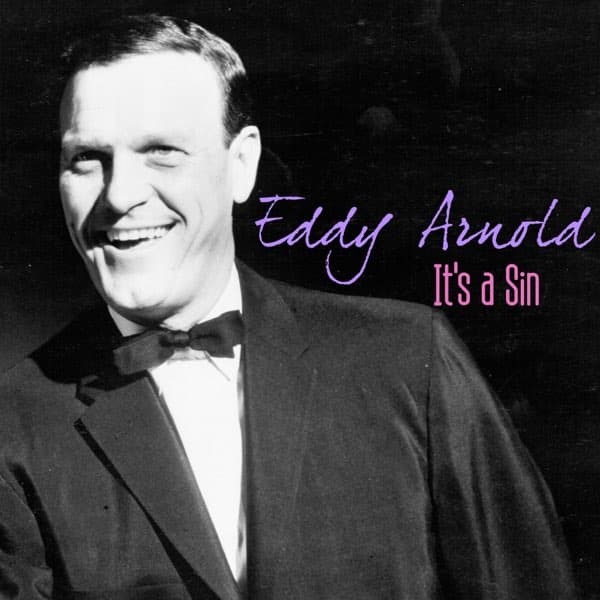
A Velvet Confession of Forbidden Love: When a Country Crooner Grappled with the Weight of Desire.
“It’s a Sin,” a song that became one of Eddy Arnold’s signature hits, perfectly embodying his smooth vocal style and the evolving “Nashville Sound” of the era, delves into the age-old dilemma of forbidden love and the internal conflict it ignites. Released in 1951, this single soared to the number one spot on the Billboard Country Singles chart, cementing Arnold’s status as a dominant force in country music and resonating deeply with listeners who understood the quiet ache and moral quandaries of a love that society deemed wrong. The song’s meaning centers on a man acknowledging the illicit nature of his love, recognizing it as a “sin” in the eyes of the world, yet confessing his inability to resist its powerful pull. It transforms a personal confession into a timeless exploration of desire versus duty.
Imagine a dimly lit room, perhaps the soft glow of a jukebox casting shadows on a lonely figure wrestling with his conscience. Eddy Arnold’s voice, rich and velvety, carries the weight of this internal struggle, a quiet acknowledgment of a love that brings both profound joy and a sense of underlying guilt. He sings not with defiance, but with a heartfelt resignation, a man caught in the inescapable web of his own desires, fully aware of the societal and perhaps personal consequences of his affections. The song, written by Fred Rose and Zeb Turner, was a prime example of the changing landscape of country music, moving towards smoother arrangements and more introspective lyrical themes. Featured on numerous compilations of Arnold’s work, “It’s a Sin” became a defining track, showcasing his ability to deliver emotionally complex narratives with a seemingly effortless grace. The lush, string-laden arrangement, a hallmark of the countrypolitan sound, underscores the romantic yet melancholic tone of the lyrics, creating a sense of timeless elegance.
The story behind “It’s a Sin” reflects the evolving sensibilities of country music in the post-war era. The raw, honky-tonk sounds were gradually giving way to a more polished and commercially accessible style, often incorporating orchestral arrangements and smoother vocal deliveries. Eddy Arnold was a key figure in this transition, and “It’s a Sin” perfectly exemplifies this shift. The song’s success demonstrated the growing appeal of country music that explored more nuanced emotional themes with a sophisticated musical backdrop.
For those of us who have navigated the complexities of love and the often-conflicting demands of societal norms and personal desires, “It’s a Sin” evokes a sense of quiet understanding. It speaks to the timeless human struggle of reconciling our deepest feelings with the expectations and judgments of the world around us. Arnold’s smooth, almost confessional delivery lends a profound sense of intimacy to the song, making the listener feel as though they are privy to a deeply personal and perhaps forbidden secret. It is a song that reminds us that the human heart often follows its own compass, even when that path leads us into morally ambiguous territory, and that the weight of such love can be both a burden and a profound, undeniable truth.